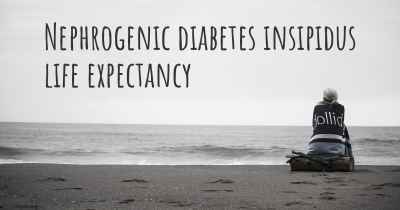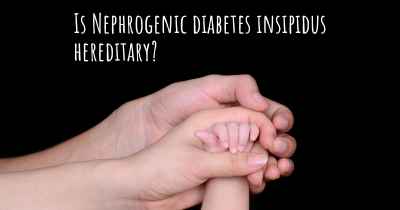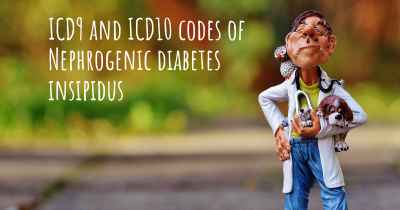Which are the symptoms of Nephrogenic diabetes insipidus?
See the worst symptoms of affected by Nephrogenic diabetes insipidus here

Nephrogenic diabetes insipidus (NDI) is a rare condition that affects the kidneys' ability to concentrate urine, leading to excessive thirst and frequent urination. Unlike diabetes mellitus, which is characterized by high blood sugar levels, NDI is caused by the kidneys' inability to respond to a hormone called antidiuretic hormone (ADH) or vasopressin. This hormone normally helps regulate the body's fluid balance by reducing urine production.
The symptoms of NDI can vary in severity and may present differently in infants, children, and adults. Some common symptoms include:
- Polyuria: Excessive urine production is a hallmark symptom of NDI. Individuals with NDI may produce large volumes of diluted urine, often exceeding 3 liters per day in severe cases. This can lead to frequent urination, even during the night (nocturia).
- Polydipsia: Excessive thirst is another prominent symptom of NDI. The body tries to compensate for the increased urine output by triggering intense thirst, leading to the consumption of large amounts of fluids.
- Dehydration: Despite drinking excessive amounts of fluids, individuals with NDI may still experience dehydration. This occurs because the kidneys are unable to reabsorb water properly, resulting in a net loss of body water. Dehydration can lead to symptoms such as dry mouth, dry skin, fatigue, dizziness, and in severe cases, even confusion or unconsciousness.
- Electrolyte imbalances: NDI can disrupt the balance of electrolytes in the body, particularly sodium and potassium. This can lead to symptoms like muscle weakness, muscle cramps, and irregular heart rhythms.
- Growth failure (in children): Children with NDI may experience growth failure due to the body's inability to retain water and maintain proper fluid balance. This can result in delayed physical development and short stature.
- Urinary tract infections (UTIs): Individuals with NDI may be more prone to developing urinary tract infections. The frequent urination and diluted urine provide an environment conducive to bacterial growth, increasing the risk of UTIs.
It is important to note that the severity of symptoms can vary depending on the underlying cause of NDI. NDI can be either acquired or inherited. Acquired NDI can be caused by certain medications (e.g., lithium, some diuretics), chronic kidney disease, high calcium levels, or genetic disorders. Inherited NDI is typically caused by mutations in the genes responsible for the functioning of the kidneys' ADH receptors.
If you or someone you know is experiencing symptoms suggestive of NDI, it is crucial to seek medical attention for proper diagnosis and management. A healthcare professional will perform various tests, including urine and blood tests, to evaluate kidney function and ADH levels. Treatment options for NDI may include medications to enhance the kidneys' response to ADH, dietary modifications, and adequate fluid intake to prevent dehydration.
Posted Mar 7, 2017 by Mason 1050
Posted Mar 8, 2017 by Britney 600
Posted Mar 11, 2017 by Adam 300
Posted Mar 4, 2017 by Marina 1000








